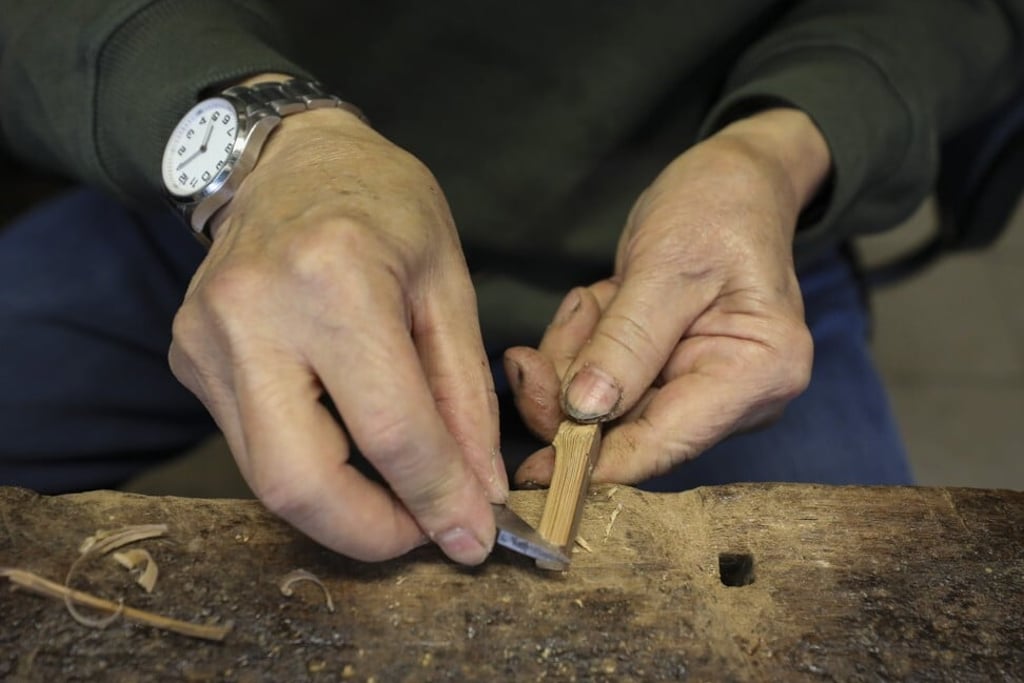Hong Kong’s last craft masters and the artists trying to keep their skills alive
A birdcage maker and a mahjong tile carver worked with local and international artists to share their decades of experience. The fruits of their combined labours are exhibited on one of the city’s trams for all to see.

It is just before sundown on a spring evening and the orchestra is already in full swing. Songbirds clamour for attention, their lilting calls lost to a cockatoo’s squawks and the “doh jeh, doh jeh, doh jeh” of a blue-and-yellow macaw. The gruff calls of middle-aged men huddled around decks of playing cards and ashtrays add to the cacophony, amid which sits, cool and calm, Chan Lok-choi: Hong Kong’s last birdcage maker.
“I started learning how to make birdcages in 1955 from my uncle, who referred me to one of the greatest birdcage masters in Hong Kong, Cheuk Hong,” says Chan, now a sifu, or master, himself. In his late 70s, his posture, exact and graceful, reveals little of the decades he has spent hunched over, honing his craft. He gently manipulates two thimble-sized pieces of bamboo, which will be attached to miniature porcelain pots used for birds’ food and water and slotted between the bars of a cage, once completed.
Chan has occupied this same spot in Yuen Po Street Bird Garden, in Mong Kok, for about 20 years, after moving from his original shop, located where the Langham Place mall now stands, on Shanghai Street. In recent years, business has declined. If it weren’t for the birds he keeps in his handmade cages at his studio, Chan would have no need to return every day.
“Sometimes I come here just to feed my birds,” he says. “They’re why I am here. Business is not so good these days.”

Bird-keeping in Chinese culture began with the bannermen – Qing-dynasty martial elites who were gainfully employed to defend their garrisons but had little to do during peacetime. Raising birds provided a welcome distraction from an untaxing existence, and to pass the time the bored elites would take their pets and parade them around the cities and lands they were paid to protect should the need arise.
As the centuries slipped by, owning birds became more commonplace – the animals descending the social hierarchy to become companions of the common man, who mirrored his military predecessor in the pride taken from exhibiting both cage and occupant.
